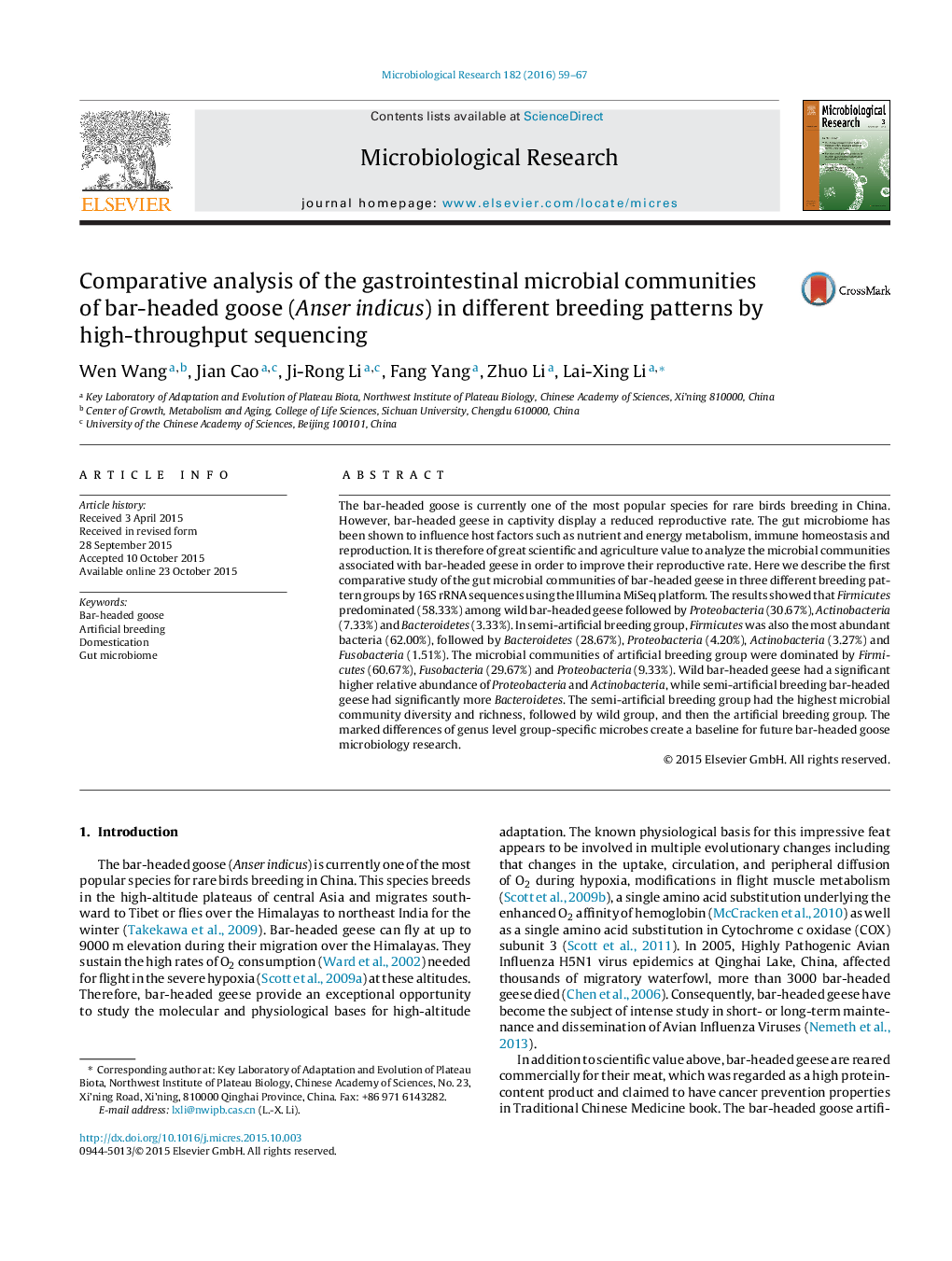| Article ID | Journal | Published Year | Pages | File Type |
|---|---|---|---|---|
| 2092055 | Microbiological Research | 2016 | 9 Pages |
The bar-headed goose is currently one of the most popular species for rare birds breeding in China. However, bar-headed geese in captivity display a reduced reproductive rate. The gut microbiome has been shown to influence host factors such as nutrient and energy metabolism, immune homeostasis and reproduction. It is therefore of great scientific and agriculture value to analyze the microbial communities associated with bar-headed geese in order to improve their reproductive rate. Here we describe the first comparative study of the gut microbial communities of bar-headed geese in three different breeding pattern groups by 16S rRNA sequences using the Illumina MiSeq platform. The results showed that Firmicutes predominated (58.33%) among wild bar-headed geese followed by Proteobacteria (30.67%), Actinobacteria (7.33%) and Bacteroidetes (3.33%). In semi-artificial breeding group, Firmicutes was also the most abundant bacteria (62.00%), followed by Bacteroidetes (28.67%), Proteobacteria (4.20%), Actinobacteria (3.27%) and Fusobacteria (1.51%). The microbial communities of artificial breeding group were dominated by Firmicutes (60.67%), Fusobacteria (29.67%) and Proteobacteria (9.33%). Wild bar-headed geese had a significant higher relative abundance of Proteobacteria and Actinobacteria, while semi-artificial breeding bar-headed geese had significantly more Bacteroidetes. The semi-artificial breeding group had the highest microbial community diversity and richness, followed by wild group, and then the artificial breeding group. The marked differences of genus level group-specific microbes create a baseline for future bar-headed goose microbiology research.
